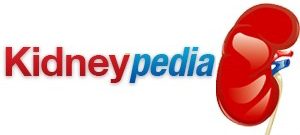
The term azotemia refers to a medical condition in which nitrogen compounds accumulate to high concentrations in the blood. These compounds include urea and creatinine as well as some other substances. The condition is potentially quite harmful. Most commonly, it arises as a result of kidney dysfunction; the removal of these substances from the bloodstream is the task of the kidneys so that their accumulation results when the kidneys fail.
Azotemia is divided into three different classifications based on what part of the kidney/urinary tract system is the host to the problems affecting kidney function. The three classifications are prerenal azotemia, primary renal azotemia, and postrenal azotemia. Primary renal azotemia arises as a result of damage to the kidneys themselves or problems occurring inside the organs. Postrenal azotemia is a consequence of blockage of the urinary tract downstream from the kidneys.
Prerenal azotemia refers to the condition when it arises from factors leading into but not inside the kidneys, usually involving blood flow to the kidneys. Although the symptoms are similar, the treatment options for the three different
types of disorder are different.
Causes
There is usually no kidney disease properly so called associated with prerenal azotemia. However, kidney damage can result from obstructed blood flow, so it can be an accompanying syndrome along with azotemia even though it is not the proximate cause. There are several possible causes of loss of blood flow to the kidneys. These include actual loss of blood such as can occur with severe bleeding from traumatic injury. Dehydration can also be a culprit. Shock, congestive heart failure, or anything else interfering with heart function can also affect blood flow to the kidneys (and elsewhere –
Prerenal Azotemia And BUN-Creatinine Ratio
When azotemia is diagnosed, one test that works well to pinpoint whether the cause is prerenal, renal, or post-
of either usually show a degree of kidney dysfunction.
Although both of these compounds is likely to be abnormally high in the presence of any significant kidney problems, depending on the cause and type of problem one may be elevated higher than the other. When the damage is caused by loss of blood to the kidney (prerenal azotemia, in other words), BUN will usually be elevated higher than creatinine. A ratio of 20:1 or higher is a sign of prerenal azotemia. 15:1 is the ratio for a healthy kidney, as well as lower overall levels.
Symptoms
One common symptom of prerenal azotemia is reduced urine flow or even absence of urine (oliguria or anuria). Another symptom is when the wrist trembles when extended, like a bird flapping its wing. Still other symptoms include confusion and decreased alertness, thirst, dry mouth, rapid pulse rate (tachycardia), skin pallor, fluctuating blood pressure depending on the body’s position.
A sign of a severe level of azotemia is the presence of “uremic frost.” This occurs when urea is pumped out of the body in sweat, with the compounds deposited on the skin as sweat evaporates. The crystalline deposits resemble frost.
Treatment
The goal of treatment for prerenal azotemia is to restore normal blood flow to the kidneys. Time is of the essence in this treatment, as permanent kidney damage could result from the loss of blood if it continues for too long. The exact treatment will depend on what caused the interruption of blood flow. If the cause is actual loss of blood, restoring the blood supply through intravenous blood feed or other methods is called for. Usually this occurs in a hospital setting if the blood loss was sufficient to produce azotemia.
Where the problem is related to dehydration, rehydration and restoring the body’s fluid balance is appropriate. This can also involve dietary
measures or sometimes medications, although the obvious treatment –
Where the loss of blood flow is caused by arterial blockage, surgical or other procedures to correct this are usually done. Standard treatments exist for heart disease as well, and are appropriate when the cause is a problem with the heart. And so on.
After the blood flow is restored, additional treatments may be used to raise blood pressure or increase heart output. In all cases, whatever the appropriate treatment, prerenal azotemia is a serious condition and requires relatively aggressive intervention. Otherwise, irreversible kidney damage could result.
With severe kidney failure, the only workable therapies are renal replacement therapies, including dialysis or even a kidney transplant. Successful intervention to identify and treat the cause of prerenal azotemia can prevent this necessity from arising.
